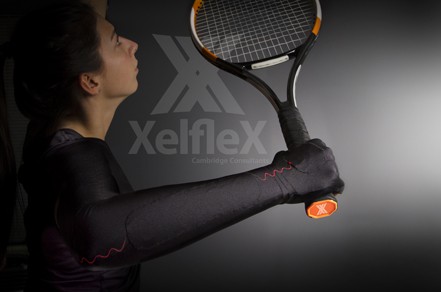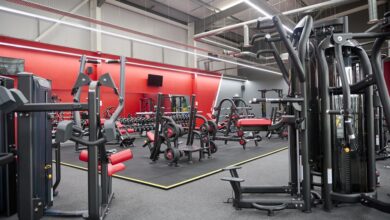
When is a watch not a watch? When it’s an Apple Watch. Sure, it tells the time, but it does a whole host of other things too, such as provide physical activity reports and relay messages. More of a mini-computer for techy whizz-kids than an actual time piece, the biggest difference is that this is the first of its products that’s designed to actually be worn.
This is an important point in a market where the likes of Fitbit, TomTom and Garmin are already well in on the game. Not just because what’s good enough for Apple must surely be good enough for the rest of us, but because even if the Apple Watch fails, it’s still going to make the idea of wearable technology a whole lot more, well, the norm.
Yet to be convinced
It appears the UK public is still to be convinced about the benefits of wearable tech. A recent survey of 2,000 adults conducted for Hive by British Gas found that just 25 per cent of Brits believe it will improve their day-to-day lives, while one in 10 of us thinks it will actually make our lives harder.
Potentially though, this is because unless wearable tech works as a very specific form of tool, it just doesn’t seem to have much point other than as a rather expensive, and soon to be obsolete, fashion accessory.
However, in the sports market, wearable tech does have an important function in monitoring performance, teaching technique and providing motivation, a role that’s only expected to grow as technology develops further.
This is true at a consumer level, where technology motivates users to train harder to achieve their target time in their next half marathon, but also at an elite level, where achieving only marginal gains can make all the difference. No better evidence of this has been seen than in Team Sky principal Dave Brailsford’s recent trip to Silicon Valley, where he went on the hunt for the latest technology that could potentially improve cycling performance.
Connected system development
No one in the UK is more aware of the developing market for wearable tech in the sports industry than Ruth Thomson, head of consumer product development at Cambridge Consultants, an innovative product development engineering and technology specialist. The company employs over 450 engineers and scientists and one of its specialisms is connected system development across a whole range of market areas, including sports and fitness.
“We’re working with the likes of adidas and the Gatorade Sports Science Institute, as well as lots of other I can’t talk about,” Thomson says. “People come to us to develop something novel very quickly or develop new products they can’t create in-house.”
She has seen first-hand how quickly the wearable tech market is developing: “I always go to the International CES [Consumer Electronics Show] in Las Vegas every January. Seven years ago it was mostly TVs and computers, with just a few dusty pedometer stalls at the back. Three to five years ago heart [ECG] and brain sensors [EEG] started to creep in, but around two to three years ago the range of fitness technology mushroomed.
“Now the amount of sports, fitness and medical products at the exhibition is huge, with things speeding up even more as technology becomes more and more sports, rather than purely fitness specific.”
Previously, Thomson says the big drivers in the market were designed to measure simple activity and performance metrics such as heart rate, but as that can now be done easily with non-invasive technology, the race is on to develop technologies that can measure more about the body, such as lung capacity, joint wear lactate levels and hydration. “Though that’s very difficult to do,” she admits.
Thomson agrees that the release of the Apple Watch is indicative that the market has mass attention but, although on an upward curve, not yet mass adoption: “Wearable tech is happening right now because technology has developed to a point where the weight and size of components means they can be worn and their cost means they’re affordable. The power requirements are also much lower, with, for instance, the advent of Bluetooth Smart.
“As well as that, most people are likely to have a smartphone now, when even a few years ago they still weren’t the norm – and the wearable tech market can piggyback on that. It means everyone has already got half the gadgetry they need to get in on the game. It makes for a much easier sell in or add on.”
Thomson predicts technology is going to be increasingly embedded into clothing fibres in order to assess data about the body and that it will be used in the future to not just measure heart rate and sweat production, but lactate and hydration levels too. She also thinks it’ll become more sports rather than fitness specific, with sensors and algorithms designed to monitor performance levels and technique for particular activities.
A good example of this is Cambridge Consultants’ XelfleX, which though still in development and at least a year off being ready for market, is a novel type of ‘smart’ textile that turns garments into active motion sensors. It can be used to make comfortable, washable, robust clothing – and gives users information not available from existing wearables.
At the moment, smart fabrics have multiple electronic sensors, which can make them cumbersome and sensitive to moisture. What makes XelfleX different is its fibre optic thread that acts as a sensor and making a garment inherently smart. The only addition required is a small electronics pack that clips onto the fibre, for example, in a pocket, which communicates with a smartphone.
The technology, which uses fibre optics across the joints to pick up movement, could be used for fitness and sports coaching, particularly to help perfect a tennis serve, golf swing or ski technique, for example.
Battery issues
“Unlike with other kinds of wearable tech, such as medical, wellness or enterprise applications, battery life isn’t as much of an issue in sportswear,” Thomson says. “A battery doesn’t have to last for a whole day, because no one does any sport activity for that long.
“But ensuring batteries are charged is a problem. When we come in from a run, we don’t plug in our trainers, but charging up wearable tech is going to have to become a daily habit – a bit like charging a mobile phone. Still, it took a huge shift in behaviour for people to get into the habit of doing that, but we’ve managed.”
Thomson says brands struggle with retailers who don’t understand how best to display wearable tech: “It’s almost as if there’s a confusion about whether it’s an electronics or a sports product, but wearable tech is an upsell, not a category in its own right. If the product improves a squash player’s performance, it needs to be on sale by the squash racquets.”










